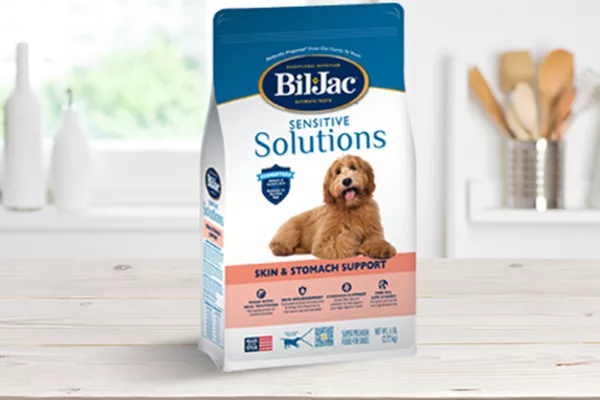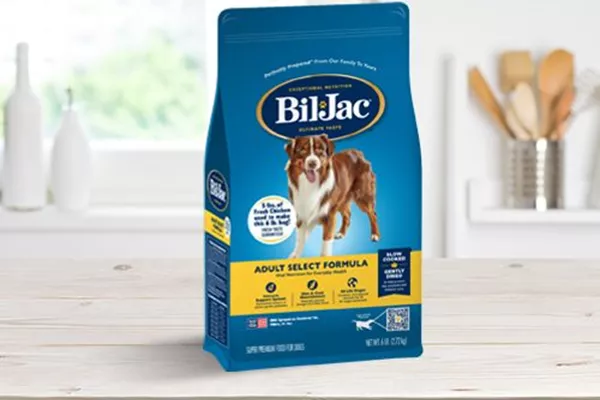The bond that you share with your dog is a special thing. It brings you joy nearly every minute of your day – except when it’s time to vacuum.
Dog hair has a way of getting everywhere. It gets in the carpet, coats your furniture, sticks to your clothes, and even decorates the inside of your car. It’s a small price to pay, but it does make you wonder exactly how to deal with dog hair.
The good news is that there are some simple tricks you can use to keep your house relatively hair-free without limiting your dog’s access. Let’s look at what you can do to deal with your dog’s stray hair.
Why Do Some Dogs Shed a Lot?
Before you began to clean up a bunch of fur, it’s helpful to understand why your dog sheds. There are a few reasons why this can happen, as some of them can be controlled to an extent.
Normal shedding
It’s no secret that dogs have different types of coats. The type of coat your dog has will greatly affect how much hair he leaves around your house.
Let’s clear up one thing here – all dogs shed. However, how much they shed can vary quite a bit. It’s a misconception that hypoallergenic dogs don’t shed at all, but it is true that they tend to shed significantly less than other breeds.
It’s important to understand what is considered a normal amount of shedding for your particular faithful friend. Dogs with lots of fur, long hair, and thick undercoats tend to be the biggest shedders of excess dog hair. These types of dogs include breeds like:
- German Shepherds
- Siberian Huskies
- Great Pyrenees
- Chow Chows
- Golden Retrievers
- Labrador Retrievers
These dogs continually shed hair as their coat constantly replaces itself. Old fur falls off as new fur grows into place.
The weather also affects this cycle. Dogs will naturally grow a thicker coat to keep themselves warm during cold weather. Of course, that means they need to get rid of that excess fur when the weather warms up again. These dogs will usually experience short periods of extreme shedding often referred to as “blowing coat” when the weather changes.
On the opposite end of the spectrum, you’ll find some dogs that shed significantly less. However, that doesn’t mean you’re off the hook for grooming.
Many of these breeds have hair that continually grows instead of going through regular shedding cycles. This scenario means that your dog will need regular hair cuts and grooming if you don’t want him to look like a ragamuffin. Dogs in this category are typically smaller dogs and include breeds like:
- Bichon Frise
- Poodles
- Shih Tzus
- Schnauzers
- Scottish Terriers
- Havanese
Abnormal shedding
If your dog seems to be shedding more than normal, there may be something more afoot. Certain medical conditions like infections, allergies, or worse can cause excessive shedding.
Check your dog’s skin thoroughly for skin irritations or sores and watch out for bald spots, excessive scratching and licking. If you notice any of these symptoms, take him to the vet to have him checked out right away.
If you don’t spot any irritation or other issues, excessive shedding doesn’t always mean your dog is sick. Other factors such as stress and poor diet can also cause a dog to shed more than normal, but these factors can be corrected with some love, attention, and proper nutrition.
How a Dog’s Diet Impacts Their Skin and Fur
One indication of poor nutrition is dull, unhealthy-looking hair that sheds everywhere. A well-nourished dog’s coat should be smooth and relatively soft depending on your dog’s breed. If this isn’t the case, it’s time to look at the food bowl.
It’s important to feed your dog a high-quality food like Bil-Jac Super Premium Dog Food. Bil-Jac Dry is slow-cooked and gently dried to specifically help protect the key nutrients dogs need every day to be healthy. Protein and essential fatty acids help support not only your dog’s skin and coat, but also everything inside. For shedding in particular, Omega-3 and 6 fatty acids can help protect against irritated skin and support heart and joint health at the same time.
You should also make sure that your dog is drinking plenty of water. Dehydrated skin doesn’t hang onto hair as well and can contribute to your dog’s hair problem. Having that fresh water bowl ready will help your furry friend maintain a nice healthy coat over time.
How to Get Rid of Dog Hair Everywhere
Now that you have some more background on why dogs shed, it’s time to address the issue at hand: dog hair removal.
Even if you’ve addressed any irritation or other causes of excess shedding, you’ll still need to battle against stray dog hair from time to time – or all the time, depending on your dog’s breed mix. Luckily, there are many tricks you can use to keep your home (somewhat) free of dog hair.
How to limit the spread of dog hair
The best way to mitigate furmaggedon is to cover up anything that you don’t want to clean. For example, lay out a blanket or towel in your dog’s favorite place to sleep. This trick not only gives your dog a special spot that makes him feel loved, but also allows you to pick up those blankets and throw them in the wash.
This process extends beyond just carpet. Furniture covers, car hammocks, and other protective measures will help you limit the spread of dog fur to easily removable items. Yes, you’ll still have to clean them, but it’s definitely better than trying to remove stray hair from every square inch of your home or car.
How to get dog hair out of carpet
Carpet is hard because it takes up so much space. A pumice stone works to ball up hair and make it easy to pick up, but who wants to spend their afternoon massaging their entire carpet? Regardless, it’s a great option for small areas.
To go over your entire carpet, a rubber broom is a better choice. Using a rubber broom or a similar tool will help pull up hairs and eliminate big clumps that can clog the vacuum. Once the fur is loosened from the carpet, it’s vacuuming time.
When you vacuum, try vacuuming in several different directions. It’s very unlikely that all the dog hairs will get stuck in the carpet the same way. By changing up your vacuuming pattern, you should be able to dislodge and suck up more fur overall.
How to get dog hair off furniture
Static electricity and low humidity are dog hair’s best friends, so removing them from the equation makes dog hair clean up easier. There are a few ways to do this.
One solution is to dampen a rubber glove and run your hand over your couch to watch the hair magically bunch together for easy removal. Once the glove gets hairy, simply rinse and repeat. You can also lightly run a damp sponge over most fabrics to clump up the hair – just make sure not to make anything too wet. A light misting with a spray bottle should also work well.
You can also treat your furniture with anti-static spray to help eliminate the cling factor. This process will make it easier to remove hairs. You can also use dryer sheets, pumice stones, and other objects to loosen those hairs as well.
Yet another option is to grab a lint roller or a piece of duct tape and go to town on your piece of furniture. It’s not the quickest method of fur removal, but it can be an easy fix in a small area.
How to get dog hair out of clothes
The easiest way to keep dog hair out of your clothes is to get in the habit of using a dryer sheet when drying your clothes. These sheets reduce the static electricity and help prevent hairs from sticking to your clothes in general.
If you don’t have time to run clothes through the dryer, you can also pass a dryer sheet over your clothes to grab any strays when you’re getting dressed. A lint roller can also be helpful when you have some pesky dog hair sticking to your clothes. You can always keep one handy in your house and car to snag those last few hairs that always seem to make it through.
How to Reduce Loose Dog Hair Through Grooming
An excellent way to cut down on the amount of dog hair in your house is to clean it off your dog before he gets a chance to leave it everywhere.
Simply brushing your dog’s coat regularly makes a huge difference. How often you need to brush depends on your dog’s hair type and can range from once a day to once a month. Choose your brush wisely – coarser coats will benefit from a stiffer bristle brush whereas a wire-pin brush works better for curly, woolly coats. There are also a variety of tools that are designed for deshedding that can be very helpful. If you’re not sure what type to use, ask your vet or a professional groomer what they’d recommend for your dog.
Regular baths can also cut down on shedding by removing loose hairs. Special de-shedding shampoos with moisturizers help hydrate the skin as well, creating stronger hair follicles, thus reducing shedding. Groomers are specially trained in deshedding services and could be an excellent option, even just a couple times a year, to help manage hair loss.
Finally, remember that we said low humidity and static electricity are a perfect environment for attracting dog hair? Using a humidifier in your home can be helpful if the air is overly dry. The hair will still be present, but it won’t cling to fabrics quite as well. Plus, the extra humidity may help if your dog is dealing with any skin dryness.
Keeping It Clean with Your Furry Friend
The great news for you is that there are plenty of options for keeping your home clean and (mostly) hair-free. From the food bowl to the dog brush, you can help cut down on the amount of hair at home and in your car.
Want to learn more about what you can do to support your furry friend? Sign up for the Best Friends Club to receive our exclusive monthly email newsletter for more dog care advice, nutritional info, and special members-only discounts on Bil-Jac Dog Food, Treats, and other products.




